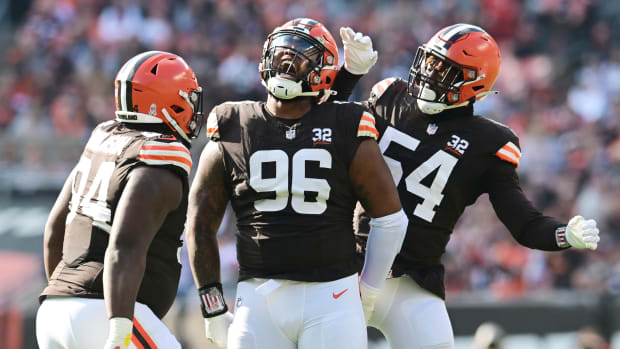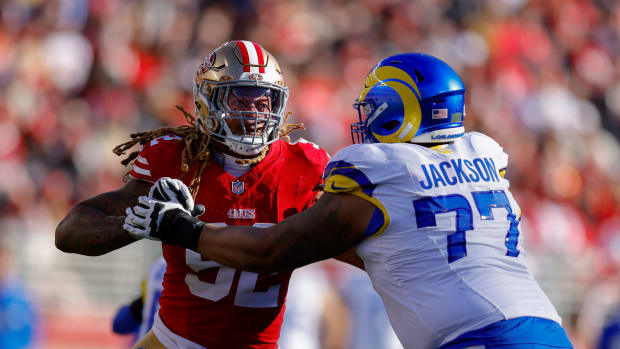Scouting Pittsburgh: Antonio Brown Is Unstoppable
1.Ben Roethlisberger is one of the best pure throwers in the NFL. For years we’ve marveled at Roethlisberger’s ability to extend plays and manipulate defenses with pump fakes. It is so tantalizing in and of itself that we fail to appreciate what follows: the passes he makes after extending plays are exceptional. You see precision accuracy and arm strength in all facets. In recent years, the precision accuracy has transferred over into the quick-strike spread game as well. And, on plays either in or out of structure, Roethlisberger remains a premier downfield thrower. He’s up there with Aaron Rodgers, Russell Wilson, Carson Palmer, and Tyrod Taylor on football’s first-tier of deep-touch passers.
2. Those spread formations that have come to define Pittsburgh’s aerial attack do wonders for helping the wide receivers. Because those wideouts—Antonio Brown, Markus Wheaton, Darrius Heyward-Bey and now, Sammie Coates in place of the suspended Martavis Bryant—are all so fast, defenses play them with extra cushion. That only amplifies the spread’s quick slants and receiver screens.
• STEELERS CAMP: Getting younger and hitting harder
3. Antonio Brown is what makes this passing game go. He’s the league’s best all-around receiver. Not only can Brown run any timing-based route with quickness and body control that’s matched only by Odell Beckham Jr., he also has an uncanny feel for improvising when plays break down. That’s vital for working with Roethlisberger. Stopping Brown seems all but impossible; down the stretch last season, several times he beat dedicated “2-man” doubles teams, with one cornerback playing purely underneath him in trail man coverage and a safety playing purely over the top in deep-help. A defense can’t give a guy more attention than that.
4. An overlooked player on this offense: right guard David DeCastro. He’s the designated pull-blocker on Pittsburgh’s lucrative “counter” run plays. “Counter” is a great run to use with Le’Veon Bell because the delay element capitalizes on the patience that makes Bell such a dangerous ballcarrier.
• TEAM-BY-TEAM PREVIEWS: Andy Benoit’s analyses are rolling out daily as the season approaches
5. Will this offense look any different with tight end Heath Miller now retired? His replacement, Ladarius Green, is a better athlete, but it’s hard to replicate Miller’s awareness and soundness as a move-blocker. Plus, Miller was Roethlisberger’s short-middle-of-the-field safety blanket. The trust it took to become that cannot be established with another player in just one year.
6. No defense was more aggressive and complex with disguised coverage rotations out of blitzes than the Steelers’ last season. They especially did it late in games and against offenses that featured slot receivers. The complicating factor is they often involved a Cover 2 concept to the side the blitz came from. That’s unusual because defenses typically don’t like putting that many bodies to one side of the field. But quarterbacks didn’t handle those weird looks very well.
7. The Steelers can be targeted through the air on first downs. That’s about the only down where they don’t like to bring pressure, and in their matchup Cover 3 zone scheme, the corners play with a sizeable cushion. Last year they averaged 7.6 yards an attempt here, fifth highest in the NFL. A properly executed quick-strike pass to the outside is all but guaranteed to gain five yards.
8. Explosive third-year linebacker Ryan Shazier has a chance to be an All-Pro in 2016. Shazier played markedly faster and yet showed more patience down the stretch last season. He was featured in almost every disguise tactic the Steelers employed.
• BREER’S NOTEBOOK: The Benals are finished “being stupid”
9. Kevin Colbert’s draft moves this year revealed a lot about today’s NFL. Never has the GM prioritized defensive backs over front seven defenders. But this year he took cornerback Artie Burns in the first round and safety Sean Davis in the second. He didn’t address the need at nose tackle until the third round (Javon Hargrave). The Steelers, a classic 3-4 base defense, have always sought first and foremost a sturdy run defense that would force opponents into third-and-long. That’s when Pittsburgh’s famed zone blitz tactics would come out. But now offenses are going three-wide and throwing on early downs. So defenses have to take their nose tackle off the field and play nickel. That’s changed how the Steelers are building their team. In the past two drafts, they've selected three defensive backs in Rounds 1 or 2. From 2006-14, they selected zero defensive backs in those rounds.
10. There’s talk that all three of those rookies—Burns, Davis and Hargrave—could start in 2016. That’d be surprising. Rookies typically don’t play much in Pittsburgh because the scheme is so nuanced. It is built on read-and-react rotations and intricate help coverages. All this requires a rich understanding of offensive tendencies. What’s more, second-year defensive coordinator Keith Butler will almost surely want to deploy even more of his complicated blitz packages in 2016. Familiar veterans are so much easier to trust there.
Question? Comment? Let us know at talkback@themmqb.com




































